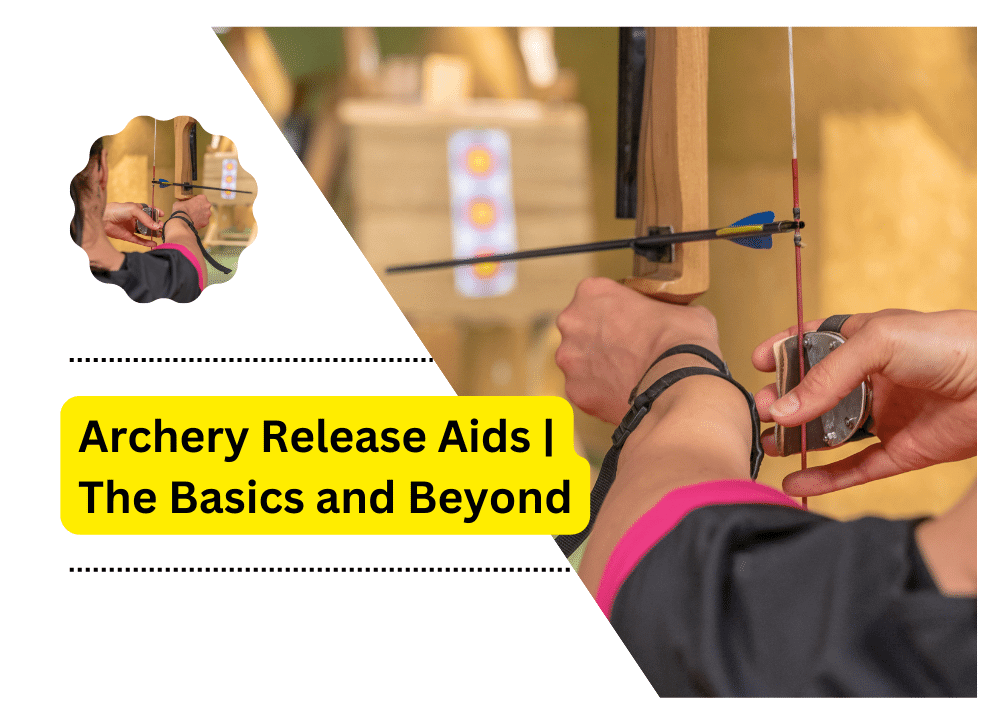
Archery Release Aids are an essential part of the archer’s equipment. Release aids help provide a more accurate shot by reducing hand movement. Hand movement can cause inconsistencies in arrow flight. They also offer a more excellent range of motion when shooting. This article will discuss the basic types of release aids and how they work. Additionally, it will cover other advanced features and their benefits.
The Basics of Archery Release Aids
A release aid is a device that attaches to the bowstring and releases it when triggered. Release aids come in many forms, including wrist straps, handheld triggers, and more. These devices are adjustable for archers to customize according to their needs.
Types of Archery Release Aids
The most common type of archery release aid is the handheld trigger-style release. It attaches to the bowstring, providing a mechanical trigger like a finger tab. Other popular types include wrist straps, back tensioners, and thumb and ring triggers. Each type of release aid has its advantages and disadvantages. It is crucial to choose the right one based on your experience level and shooting style.
Finger Tab
Beginner archers use the finger tab as the most common type of release aid. It consists of a trigger that attaches to the bowstring and releases it when pulled. Each type of release aid has its advantages and disadvantages. It is crucial to choose the right one based on your experience level and shooting style.
Wrist Strap
The wrist strap is like the finger tab but designed for more experienced archers. When pulled, it attaches to the back of the wrist and provides a trigger that releases the bowstring. This type of release has the advantage of providing a more excellent range of motion in shooting. As a result, it allows for more accurate shots.
Back Tensioner
The back tensioner is a type of Archery Release Aids designed for experienced archers. This device attaches to the back of the bow and allows for more precise control over tension on the string. This release type reduces finger fatigue from holding the bowstring too tightly. Additionally, it can improve accuracy when shooting.
Thumb Trigger
The thumb trigger is a type of release aid designed for experienced archers. This type of Bow release trigger attaches to the back of the thumb. It provides a trigger that releases the bowstring when pulled. This type of release offers better control over string tension. It can help improve accuracy when shooting.
Ring Trigger
The ring trigger is a type of release aid designed for experienced archers. This type of release attaches to the ring finger. It provides a trigger that releases the bowstring when pulled. This release offers better control over string tension. As a result, it can improve accuracy when shooting.
Advanced Release Aid Techniques
Advanced techniques improve shooting accuracy with different release aids.” These include anchoring, various finger positions, and releasing with the opposite hand. Each method has its advantages and disadvantages. It is essential to experiment with them to determine which one works best for you.
Choosing the Right Release Aid
Consider archery type and experience level when choosing a release aid. Beginners should start with a finger tab or wrist strap. More advanced archers should consider back tensioners, thumb, and ring triggers. Consider comfort and fit when selecting a release aid. An ill-fitting device can cause discomfort and impede accuracy.
Maintenance and Care of Release Aids
When maintaining your release aid, keep all moving parts lubricated and debris-free. It can help keep the device functioning properly and reduce wear and tear over time. Additionally, always store your release aid in a clean, dry place when not in use to ensure its longevity.
Troubleshooting and Common Mistakes
When using a release aid, paying attention to form and technique is essential. Common mistakes include gripping the bowstring too tightly and aiming off-centre. Shooting inconsistently is also common. Additionally, archers should always know their stance and posture when shooting. It can impact the accuracy of their shots.
Release Aid Accessories
Also, to the basic types of release aids, archers can use several accessories to enhance their archery experience. Arm guards and finger tabs with adjustable tension settings improve accuracy. Stabilizers are also helpful in this regard.
The Psychological Aspect of Using Release Aids
Using a release aid can have a significant psychological impact on an archer. It can help reduce anxiety and promote a relaxed attitude while shooting. This, in turn, allows for better focus and accuracy. The feedback from the release aid can be valuable in assessing form and technique. Archers can use this information to enhance performance.
FAQ’s
Archery release aids are devices that attach to the bowstring. They help the archer control the tension on the string when shooting. They can increase accuracy and consistency, as well as reduce finger fatigue.
The best release for archery depends on the individual archer and their shooting style. Beginners may find a finger tab the best option. More experienced archers may enjoy using a wrist strap, back tensioner, thumb trigger, or ring trigger.
Most archers use release aids for greater accuracy, consistency, and comfort while shooting. But, it is not essential to use one; some archers prefer to shoot without the help of a release.
There are several types of releases for archery, each designed to suit different skill levels and shooting styles. The finger tab is the most common type and is ideal for beginners. It provides more control over the shot and helps adjust the tension on the bowstring.
Conclusion
Using Archery Release Aids can improve an archer’s performance. But, it is crucial to select the right type based on your skill level and shooting style. It is also essential to consider comfort, fit, maintenance, and care when selecting a release aid. Finally, remember that the psychological aspect of using a release aid can be crucial. Take the time to try different techniques and find what works best for you.
